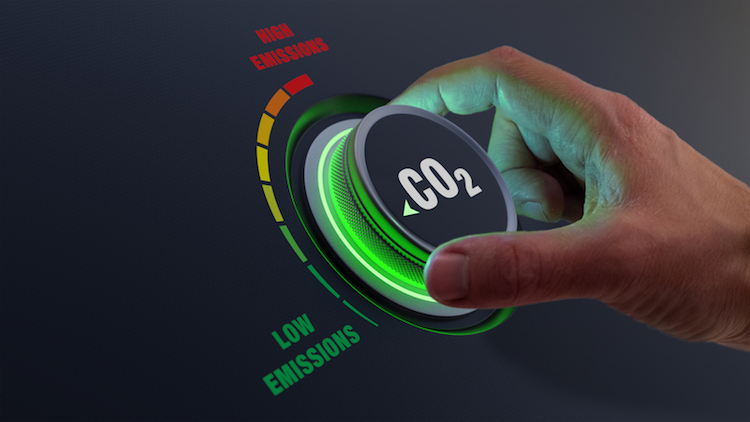
As public opinion on carbon reduction grows, the construction industry will need to respond. The change required to decarbonise construction will affect everyone, no matter what their role. Pieter Rautenbach, Ruth Finlayson, Tom Denby, James Bowles, and Kristina Henkai, of carbon- and innovation-focused working group Zero, consider the challenge of calculating and reducing carbon.
Construction projects require the management of cost, time, safety and quality. Soon, we will also be managing carbon. No matter what your role, a working knowledge of carbon will be important. The associated skills and knowledge will no longer be limited to those in sustainability roles.
The drivers of this change include shareholder expectations, regulations, contract requirements, and new tax and financial incentives. As our industry changes, organisations and individuals who are prepared will be ahead of the curve.
Those who understand carbon topics and can help drive their projects towards net zero will be in high demand.
Why do we need to measure upfront carbon emissions?

“We need to reduce upfront carbon emissions. We can do this faster with accurate and consistent carbon planning and measurement.”
Upfront emissions from material extraction, manufacturing, transportation, processing and construction account for an estimated 10%-15% of total global CO2e emissions. That’s around 3-4 billion tonnes, every year. We all have a responsibility to reduce these emissions.
At present less than 1% of all global projects plan or measure anything related to carbon emissions. For many of these projects, the measurement is oversimplified and inconsistent.
An important step forward is the estimating and measurement of emissions. In the near future, projects will create accurate estimates of total upfront emissions. These estimates, derived from information models, will support all early project stages – through planning, design, and procurement. When construction begins, the model will be updated with the actual figures, and an accurate as-built model and sum total will be created.
By doing this on our projects, we will make carbon ‘visible’. We’ll be able to make better decisions on material specification, suppliers, methods of construction, planning of activities, and plant selection.
High carbon materials and activities will be easier to see. Teams will be able to design, procure, and construct more efficiently, driving projects towards lower upfront emissions. We’ll learn a lot from carbon estimating and measuring and use these lessons on future projects. In addition, we’ll be able to measure construction-related innovations and technologies by assessing their impact on upfront emissions.
What is needed for carbon measurement?
To perform carbon estimating and measurement, we will need:
- An accurate and consistent carbon database. Many examples exist globally and are quickly maturing, for example the Built Environment Carbon Database.
- Analysis tools and modelling software. Many exist and will become more integrated into other project management software.
- Skills and resources in organisations to do this work.
- Mature information management requirements, set early on projects.
- Collaboration between client, design, and construction teams, both culturally and contractually.

“Improving health and safety is a behavioural change. Improving carbon measurement is simpler, it’s just about the numbers and resources.”
How will we do it?
The use of existing processes means that estimating and measuring carbon may prove surprisingly easy for organisations. The construction industry already has two processes that will be used for carbon measurement: BIM and cost management.
First, BIM, or digital working, is a process (methodology) that has seen widespread adoption in recent decades, and is now maturing in organisations.
Carbon estimating and measurement can be added to existing BIM processes by simply adding related information to information models, databases, and requirements. Carbon information can be attached as attributes to project components, materials, machinery, labour, transport and quantities, thereby giving accurate and consistent total upfront carbon figures.
As projects progress through their life cycles, rules for carbon information, like other project information, can be set and exchange requirements can be followed. Often, the data is readily available on our projects: we just need to use it.
By using existing BIM solutions, we can also shift the system feedback point. Our current processes related to carbon measurement are reactive; by using digital and predictive technology, we can simulate the real world and manage our impacts before they even happen. In the same way that these simulations support cost and time planning, they can also support carbon planning.

“We will start to treat carbon like an expended resource on projects, similar to cost or time.”
Second, the estimating, planning, measurement and management of carbon is closely aligned to project cost processes. Standard units of measurement and methods of working can be repurposed for carbon.
Will we see BIM managers and cost managers take on the additional skills and work for carbon estimating and measurement? Or will new roles and titles emerge: carbon estimator, carbon planner, carbon manager, carbon engineer? What additional resources will be required?
These are questions that we at Zero are posing and will be discussing at workshops that we have planned for 2022.
Are your projects also measuring carbon? Is your organisation planning to include carbon measurement on future projects? Please get in touch, we’d love to hear more.
Zero is focused on upfront carbon: embodied and construction-related carbon emissions. It will be researching and sharing content on a wide range of carbon-related topics: leadership, management, design, materials, methods, modelling, education, and carbon planning. It wants to influence change and accelerate the industry’s drive to zero emissions.
Don’t miss out on BIM and digital construction news: sign up to receive the BIMplus newsletter.











